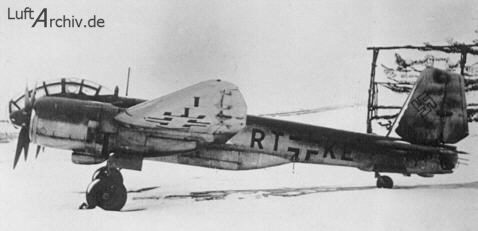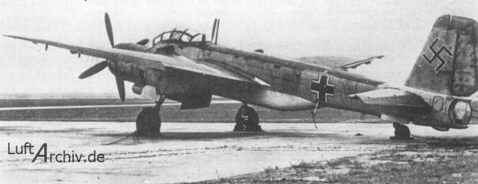
FALL IN to the FReeper Foxhole!

It's TreadHead Tuesday!

Good Morning Everyone
If you would like added to our ping list let us know.




Burnelli GX-3 (1929)



I first heard the sound of the Tiger [unknown version] in January 1945 when they crossed the Rhine North of Strassbourg in Operation Norwind [Nazi last offensive]. They were painted white in the snow and our rear command did not at first believe they had crossed over until they were heard. The 88 made a whistling sound which signalled it's coming and provided time for cover. I was in an Infantry Task Force unequipped for tank battles and we were clobbered. In March we got even, big time. Regards,
|
Air Power |
The Junkers Ju 388 Stortebeker was a World War II heavy fighter based on the famous Ju 88 airframe. It was introduced very late in the war, and production problems and the general war conditions meant very few were delivered.
When the performance estimates of the B-29 Superfortress first started reaching German ears in late 1942, widespread panic broke out. The plane had a maximum speed around 350mph, and would attack in a cruise at about 225mph at 27-32,000 ft, an altitude that no German plane could operate at effectively. If there was any hope of countering attacks by this bomber, the Luftwaffe would need new fighters and destroyers as soon as possible.
A meeting was called at the Messerschmitt factory in Augsburg, and an answer was hammered out. The fighter solution quickly settled on the Focke-Wulf Ta 152H, based on the already successful Fw 190D's with longer wings and the E model of the Junkers Jumo 213 engine. A back-up in the form of the Messerschmitt Me 155B would also be funded at a lower priority.
A similar conversion of an existing destroyer wasn't so obvious. The Focke-Wulf Ta 154 and Heinkel He 219's had the performance needed to catch the bomber, but both had short wings and would require considerable modification for higher altitude work. The Ju 88 had already been modified in this fashion as the S and T models, but these didn't have the performance needed.
Similar high-altitude modifications to the 188 were being looked at as the projected J, K and L models, which included a pressurized cockpit and wing and elevator de-icing equipment for extended flights at very high altitudes. This seemed like a better starting point, and these models were re-named Ju 388.
In order to improve performance, the 388 removed almost all of the defensive armament. Instead a remote-control turret in the tail mounted two 13mm MG 131's, aimed via a periscope in the cockpit. The turret had an excellent field of fire and could shoot directly to the rear, so the gunner's pannier under the nose could be removed. This cleaned up the plane's lines considerably.
The plane was to be supplied in the three original versions, J, K and L. The J model was a fighter with two 30mm MK 103's and two 20mm MG151/20's in a solid nose when used as a bomber destroyer. As a night fighter they replaced the 103's with the smaller and lighter MK108's, and added a second pair of MK108's as Schrage Musik behind the cockpit. The K model was a pure bomber, with a pannier under the plane to increase the size of the bay. The L photo-reconnaissance model put the cameras in the pannier along with additional fuel tanks for long range missions.
Three sub-models of each version were planned, different only in the engine installation. The -1's would mount the BMW 801G, a turbocharged version of the basic 801. The -2 would use the 2,500hp Jumo 222A/B (the B model ran the opposite direction of the A, but was otherwise identical), or the E/F versions with an improved two-speed supercharger. The -3 would mount the Jumo 213E, which included a supercharger similar to the 222E/F.
With the 801 or 213 the fighter versions flew at just over 600km/h (380mph) as a destroyer, losing about 25km/h to radar and Schrage Musik as nightfighters. That's about the same performance as the existing Luftwaffe night fighters, but it maintained this speed at much higher altitudes. With later models of the 222 it was supposed to have reached around 700km/h (435mph), again losing about 25km/h for nightfighters. These -2 versions were considerably faster than the de Havilland Mosquito, and would have made a formidable plane. The bomber versions were roughly the same speeds, while the recce versions would have been about 25km/h faster.
The first prototype was a converted Ju 188T-0, and flew in December 1943. It demonstrated much better handling at altitudes than the Ju 88S models. This was followed by a run of six new-build prototypes. However it was some time before deliveries of the production models started, while they waited for deliveries of the various high-altitude engines. By the time the engines were generally available it was clear the B-29's were being sent to the Pacific. In the meantime the German photo-reconnaissance efforts had practically disappeared due to the increased performance of the Allied defenses, so efforts focused almost entirely on the L models.
In the end very few Ju 388's were delivered, starting in August 1944. About 47 L models seem to have been built, the majority as -1's with the 801TJ engine instead of the 801G, and only three -3's with the 213E. Fifteen K-1's were built, and only three J-1 models were produced.
| Type: (L) Reconnaissance, (J) Night Fighter, (K) Bomber Origin: Junkers Flugzeug und Motorenwerke AG Models: L-Series, J-Series, and K-Series Crew: Ju 388L: 3 First Flight: N/A Final Delivery: N/A Number Produced: Ju 388L: 47 Ju 388J: 3 Ju 388K: 15 Engine: Most: Model: BMW 801TJ Type: 18-Cylinder two-row radial Number: Two Horsepower: 1,890 hp Some: Model: Junkers Jumo 213E Type: 12-Cylinder Liquid-cooled Inverted Vee Number: Two Horsepower: 1,750 hp Dimensions: Wing span: 72 ft. 2 in. (22.00m) Length: Ju 388L-1: 49 ft. 10.5 in. (15.20m) Ju 388J-1: 53 ft. 5.5 in. (16.29m) With Tail Warning Radar: 58 ft. 1 in. Height: 14 ft. 3 in. (4.35m) Wing Surface Area: 602.80 sq. ft. |
Weights: Empty: Ju 388L-1: 22,810 lb. (10,345 kg) Ju 388J-1: 22,928 lb. (10,400 kg) Loaded: Ju 388L-1 & J-1: 32,350 lb. (14,675 kg) Performance: Maximum Speed: Ju 388L-1: 407 mph (655 kph) Ju 388J-1: 362 mph (582 kph) Initial Climb: N/A Service Ceiling (Typical): 44,000 ft. (13,500m) Range with internal fuel: Ju 388L-1: 1,838 miles (2950 km) Armament: Ju 388J-1: Two 30mm cannon firing forward. Two 20mm MG 151 cannon firing forward. Two 20mm MG 151 cannon in Shrage Musik Installation in rear fuselage. Payload: N/A Avionics: Ju 388J-1 FuG 218 Neptun with Morgenstern aerial array, partially enclosed in plywood nosecone. |





Great thread. Quite the vehicle, too, come to think of it.